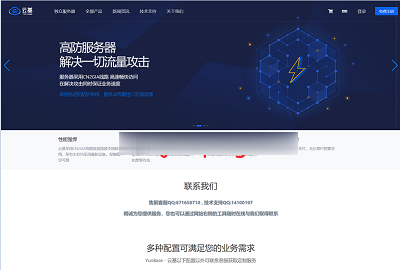塑化人体塑化技术_百度百科(Plastination _ Baidu Encyclopedia)
人体塑化技术_百度百科Plastination_ Baidu EncyclopediaPlastination_Baidu encyclopedia, Baidu home page | login newspage Post Bar MP3 photo video library.
Help set the home page, natural, cultural, geographical,historical, life, social, artistic, character, economic,scientific, sports, Asian Games, champions, core usersHuman body plasticization Technology
Human body plasticization is a technique that replaces waterin human organs and tissues with liquid silicone compounds andtransforms the human body into specimens that can bepermanently preserved. Invented by Gunther von Hagens, anexpert in German anatomy.
Catalog
S umm ary
The plasticizing technique is fixed in four steps (1)
(2) dehydration and degreasing
(3) forced infiltration;
(4) polymerizati on
Types of plasticizing Technology
The whole process of plasticization is one of storage
The two is anatomy
Three is dehydration
Four is slicing stereotypes
Five is the vacuum replacement
S umm ary
The plasticizing technique is fixed in four steps (1)
(2) dehydration and degreasing
(3) forced infiltration;
(4) polymerizati on
Types of plasticizing Technology
The whole process of plasticization is one of storageThe two is anatomy
Three is dehydration
Four is slicing stereotypes
Five is the vacuum replacement
Expand edit this paragraph overview
He is a teaching aid for anatomy. . . . . . He was inspired by theworks of Renaissance anthropologists.
Most of hisbodyis inChineseplasticized specimens (it is saidthat he hired 200 workers Chinese) , this technology requiresa lot of labor, but also very time-consuming, a year can onlymake a specimen (his patent expires, this technology byAmerican D. Corelle is changed, only the original 1/10 time) .Plasticizing requires cleaning the body first (just as in ahuman bath) , then soaking it in acetone, removing moisture fromthe tissues and preparing for injecting silicone polymersAfter the whole body was soaked into the body is plasticizedby reducing the pressure inside, the acetone into gasevaporated from polymer in the body, was pressed in finally theskin coated with catalyst, beginning two days of curingBody building costs about $50000.
Biological plasticization is a special technique that keepstissues as alive. It uses a vacuum process of biologicalspecimens were infiltrated with silicone rubber, epoxy resinand other active polymer, the type of polymer, determines theoptical properties of soaked specimen (transparent or opaque)and mechanical properties (soft and tough) . The plasticizingtechnique allows the surface of the specimen to remain in itsoriginal state, and preserves the structure of the cell at themicroscopic level. The plasticized specimens are dry,
tasteless, durable, and can be preserved for long periods oftime and easy to learn.
Edit the four steps of plasticizing technology in this section
(1) fixed
Faure Marin is mainly used for fixed.
(2) dehydration and degreasing
Acetone is used as dehydrating agent, degreasing agent andintermediate solvent in vacuum.
(3) forced infiltration;
Under vacuum conditions, acetone is replaced with silicone,epoxy and other polymeric liquids.
(4) polymerizati on
The polymers were polymerized by gas, light, or heating.Edit the technical category of this section
(1) silicon rubber impregnation technology is mainly used inthe manufacture of teaching specimens. The soft and toughspecimens are the most widely used;
(2) poly emulsion technology is mainly used in the manufactureof wooden products and thick body fracture specimens (>1cm) in
archaeology. The specimens are opaque and hard;
(3) the epoxy resin technique, which is mainly used for makingspecimens of thin bodies and organs, is transparent and ofdifferent tissue colors;
(4) polyester copolymer technology, originally used mainly forthe manufacture of brain specimens, which can distinguish thegray matter from white matter, has now replaced epoxy resintechnology.
Edit the process of the whole process of plasticizationFirst, storage
After a concentration of 20% Faure Marin perfusion, and thenin the vacuum packaging Faure Marin placed at least 4 monthstime, and then can be dissected or transported. Faure Marin' srole here is fixed, bactericidal.
The two is anatomy
The body muscle tissue, such as rotting fat, were eliminated,exposing the nervous system, muscles and bones. It takes anaverage of 15002000 hours to clean up a human specimenThree is dehydration
The dissected bodies were soaked in boxes for dehydration.Before that, the body had been contaminated by Faure Marin, soit was necessary to remove Faure Marin from acetone in a low
temperature acetone solution and replace it with acetone.Four is slicing stereotypes
In frozen conditions, the body canbe cut into 3.5 thick sliceswith a saw. These sections can be used to distinguish betweendamaged and normal organs, such as the difference betweensmoking lung and normal lung, and the difference between fattyliver and normal liver. The body was frozen and sliced intovarious shapes. The staff with a small clip, needle, needle,wood and other utensils to dehydration of the body a little putinto shape. This specimen of human body muscle, dry andastringent, not a little flexibility, a red blood vessels andmuscle tissue is clearly visible.
Five is the vacuum replacement
The human body is 70%. The use of liquid plastic sampletechnology, can make the body tissue fluid through a specialvacuum process by activated plastics such as silicone rubber,epoxy resin or polymer resin replacement out. But theobservation of human cells and human' s original appearance evenunder the microscope are still maintain their last state. Thisthe process includes four steps: fixed. Dehydration. Forcedinfiltration. After hardening. Acetone replacement specimenswere placed in the cabin, 4 months with silicone rubber in thecatalyst and gas fumigation, under negative pressure, theacetone is slowly by organic silicon replacement, eventuallybecome non-toxic, tasteless, can be a long time save thefinished specimen.
Plasticizing technology is a German medical doctor professorHagens invented in 1978, it solved the problem of anatomycircles for hundreds of years, since its birth, derived fromthis technology has many application methods, plasticizingtechnology applies not only to human specimens, also suitablefor animal, plant specimen. Plastination technique is widelyused in anatomy, embryology, biology, pathology, clinicalimaging, biomechanics, forensic science and Museum and otherdisciplines and fields.
Plastination to save the body from the formalin, specimenswithout stimulation, with dry and tasteless, durabilitycharacteristics, fault samples high transparency, finestructure, local structure can be studied in a completelynatural condition. The polymer with good physicochemicalproperties. Silicone rubber specimens can have its unique theanatomical structure of display method can be applied inmedical teaching, scientific research and medical sciencepropaganda. Plastination technique can also be applied in thefield of archaeology, anthropology and biology. To effectivelypreserve archaeological data, anthropological data and rareplants and animals of the original. This is very beneficial forscientific research. At present, in our country Guangzhou,Shanghai, Nanjing, Qingdao, Shenzhen, Tai'an and other placesthere are many biological plastic plant specimens.
Extended reading:
One
The bizarre life of zombies [USA] Mary Hroch open categories:
Science, medicine
"Human plasticization technology":
What are the Related words, I will perfect them
Baidu encyclopedia entry content is for reference only, if youneed to solve specific problems (especially in the legal,medical and other fields) , I suggest you consult the relevantfield professionals. The 34 entries help add to collection forme to share:
Co editor
Chncd7, zhuce30, Wikipedia, ROBOT, water Aoki, jia007yulong,crow color more
If you think this entry needs to be further improved, you arewelcome to participate in the edit entry. You can also learnhow to edit the entry before you start editing
If you want to complain, please go to the Baidu encyclopediacomplaint center. If you want to make comments and suggestions,please go to Baidu encyclopedia.
Your entry dynamics
Waiting for you to edit
Edit hot words for extra experience to get into my Encyclopedia
Your current level is level
Your current experience value is a bit
You can also go up to grade after you have to experience someexperience
Entry statistics
Number of visits: about 2742 times
Edit times: 6 historical editions
Recent update: 2010-07-15
Founder: Raven colornews
Special topic of Guangzhou Asian games:
Encyclopedia news:
Baidu experience sharing ceremony
Wikipedia users also come to the public welfare bar
Baidu encyclopedia authority cooperation
Baidu courseware area to make your class more exciting!
- 塑化人体塑化技术_百度百科(Plastination _ Baidu Encyclopedia)相关文档
- 尺寸修培植计人体尺寸_百度知道[基础]
- 消化聚焦中考科学,第6讲,人体和其他生物的新陈代谢,百度文库
- 作用百度养生吧人体的八大健康穴-八大要穴
- 建筑设计建筑设计人体尺寸_百度知道(The architectural design of the body size _ Baidu know)
- 大要百度_养生吧_人体的八大健康穴-八大要穴(Baidu _ health bar eight health point - eight _ body points)
- 人体人体工程学_百度百科
云基最高500G DDoS无视CC攻击(Yunbase),洛杉矶CN2GIA、国内外高防服务器
云基成立于2020年,目前主要提供高防海内外独立服务器用户,欢迎各类追求稳定和高防优质线路的用户。业务可选:洛杉矶CN2-GIA+高防(默认500G高防)、洛杉矶CN2-GIA(默认带50Gbps防御)、香港CN2-GIA高防(双向CN2GIA专线,突发带宽支持,15G-20G DDoS防御,无视CC)、国内高防服务器(广州移动、北京多线、石家庄BGP、保定联通、扬州BGP、厦门BGP、厦门电信、...

CloudCone中国春节优惠活动限定指定注册时间年付VPS主机$13.5
CloudCone 商家产品还是比较有特点的,支持随时的删除机器按时间计费模式,类似什么熟悉的Vultr、Linode、DO等服务商,但是也有不足之处就在于机房太少。商家的活动也是经常有的,比如这次中国春节期间商家也是有提供活动,比如有限定指定时间段之前注册的用户可以享受年付优惠VPS主机,比如年付13.5美元。1、CloudCone新年礼物限定款仅限2019年注册优惠购买,活动开始时间:1月31...

hostodo:2021美国独立日7折优惠促销NVMe硬盘的VPS,低至$13/年,还送DirectAdmin授权
7月4日是美国独立日,大致就是国庆节的意思吧。hostodo今年提前搞了个VPS大促销活动,4款便宜VPS,相当于7折,续费不涨价,本次促销不定时,不知道有多少货,卖完为止。VPS基于KVM虚拟,NVMe阵列,1Gbps带宽,自带一个IPv4+/64 IPv6,solusvm管理,送收费版DirectAdmin授权,VPS在用就有效! 官方网站:https://www.hostodo.com ...

-
郭吉军新媒体营销的咨询行业有哪些好的老师?bbsxp怎么用 CUTEFTP上传BBSXP到FTP服务器个性qq资料`谁有最新 最有个性的QQ个性资料网站运营刚创业的网站运营怎么做?网站联盟网盟跟b2b平台有什么区别中小企业信息化小企业需要信息化吗?需要的话要怎么实现信息化呢?硬盘人上海人说“硬盘”是什么梗雅虎天盾高手进来看看我该怎么办 新装的ie8 内存使用率达到100%了宕机宕机是什么意思srv记录SRV记录的定义